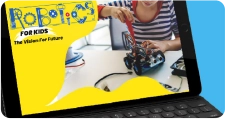

Prashant Pundir
Emerging Education Trends to Look Out for in 2022
The new academic year has come to the scene. While the global pandemic has presented its trials and tribulations to the world, technology is managing to keep many boats afloat.
Technology has gone through many changes over the years making it a useful asset for various sectors in society. This is especially in the case of the educational sector, which seems to have been transformed with pedagogical tools.
The new trends in education are important subjects to study. Virtual reality (VR), augmented reality (AR), and artificial intelligence (AI) are some of the education technology trends that everybody’s heard of. Even if they’re not part of your daily life, you can probably oversee a future where they play an important role.
Below is a chart that highlights how communication helps students feel connected and the types of media that are most prevalent –
Source: Visual Capitalist
The Boss Magazine highlights the importance of educational technology trends and how it makes learning more adaptable, accessible and interactive. Due to this, the whole process of learning has become for students as well as teachers.
PEW Research says that the “New Normal” in 2025 will be far more tech-driven. They surveyed 915 innovators, developers, business and policy leaders, researchers, and activists to gather their views on post-pandemic life. The universal view turned out to be that human-technology relations will grow further and tech-savvy students will be of prime importance.
As the educational developments continue to appear, it’s important to have a look at some of the important trends in education that teachers need to familiarize themselves with –
1. Education technology trends in learning and teaching
The Internet and computers have ensured how learning and information are easily accessible for students. By the fall of 2017, over 6.5 million students enrolled in some distance learning opportunities at a degree-granting post-secondary institution.
The technology-infused teaching methodology comes with its own challenges but it also allows teachers to be flexible in offering their learning schedule. Students can watch live lectures or recorded versions later on. Teachers will have to learn to accommodate different styles of learning.
2. Soft skills training
A Future of Jobs report highlights some of the crucial workplace skills that include critical thinking, problem-solving, people management, and creativity. For a better and brighter future for students, schools and teachers must have a system in place that develops the soft skills of students.
3. Student trend: Decreasing attention spans
A Microsoft study took notice of the attention spans overall between 2000 (which is considered to be the dawn of the mobile revolution) and 2015. They came to know that attention spans decreased by an implausible 4 seconds – from 12 seconds to 8.
The Millennials attention is not easy to grasp and the content must have brilliant dialogues, visuals, and an intriguing storyline. The younger age of students focuses more on the narrative and the visual representation of the content.
4. Teaching versus Facilitating learning
With information at the tip of their finger, students feel a sense of independence in their learning. Teachers now seem to be more in a facilitative role.
This presents different challenges for teachers who are now required to work on their own soft skills, problem-solving, and leadership. Teachers must learn to create an environment that promotes teamwork and friendly conversations.
Future trends in education
The nature of work has been impacted in astonishing ways with each industrial revolution. The current 4th Industrial Revolution could possibly impact an incredible 50 percent of jobs as tremendous technological progress leads to a change in ways as to how people go about their jobs.
Professionals who want to remain successful will have to continuously nourish and re-skill themselves. They cannot depend on their learnings from the first halves of their lives to see them through in the future.
This opens up opportunities for schools to develop new programs and create a tremendous adult learning curriculum. It could help students to adapt well to the changing professional space. The future trends in education will require a lot of flexibility from teachers as well as students.
Now, with the ever-looming presence of the Covid-19 Pandemic, schools and universities have adapted to new educational technology trends to continue serving their students. Let’s take a look at some of the emerging education trends that are continuing and are to look out for in 2022 –
1. Innovative eLearning Platforms
It’s fair to say that eLearning has been in the picture for a while, however, the trends in education are constantly evolving and becoming more and more popular. The classes for an online degree are no longer tedious video lectures, but they include peer communication and effective interaction.
Various educational institutions are now trying to increase student engagement through remote learning platforms. Not just innovation, an education institution curriculum should also follow the latest education trends happening in the outside world.
Source: Finances Online
2. AI-Driven Teaching Programs
Business and healthcare are two industries that are seeing the rise of more and more artificial intelligence (AI) programs. However, the educational sector is not far behind. The use of automated grading systems and AI teaching assistants is on the rise and it gives us an overview of the future trends in education.
Question Bot, built by David Kellerman, is a great example of an AI in action. Initially, implemented in the University of New South Wales, the question bot was programmed to provide answers to students’ questions and deliver past videos of lectures. The machine learning abilities of the bot ensure that it gets better with more exposure to different queries.
This is just one example that showcases the immense potential of AI in education. The tedious, boring tasks can be taken care of by automation and the instructors can focus on the complex ones.
3. Immersive Learning with VR/AR
VR/AR technology is mostly known for its fun and interactive games in the educational sector. However, it is not just confined to that. A journalist from the University of Maryland writes that this technology can prove wonders with a student’s attention span.
This technology helps students to eliminate distractions and immerse themselves in their work. It’s also a very handy tool for students with ADD/ADHD, since VR equipment has the ability to fully immerse the user in its digital landscape.
Apart from that, AR technology allows a breath of fresh air, a new light to see the world to students. This technology is a great way to provide novel insights to students.
4. Gamification
The process of gamification is one of the new trends in education. More and more educators are now choosing to gamify their lessons. This is handy in getting students engaged and deriving maximum interest and excitement towards learning.
A great example of this is Moonpreneur’s Moonpreneur – business strategy board game, one of the rising education trends. Moonpreneur is an educational board game that has helped hundreds of children, young adults, and adults gain financial literacy and stimulate an entrepreneurial mindset in a fun way.
This educational and fun board game makes learning financial concepts entertaining for children, who otherwise, don’t get a chance to indulge in it.
5. Learning Analytics
Data is valuable, and finally, the educational sector is beginning to notice. Analytics allows educators to be more in command as to how to best teach their students. Educators gain insights via acquiring student feedback from surveys.
This also ensures the students that their voice matters and is of importance to someone who they value. Thus, learning analytics helps teachers as well as students to keep the engagement going.
6. Blockchain Innovation
Blockchain’s Distributed Ledger Technology (DLT) provides umpteen number of advantages to education, especially data storage. With the addition of new data, a new ‘block’ is created. Therefore, making the storage theoretically infinite.
ePortfolios and Massive Open Online Courses (MOOCs) use Blockchain technology to validate knowledge. In terms of the eLearning organizations’ scalability, authentication, and pricing issues, DLT technologies bestow solutions.
7. Chatbots
Are you seeking professional consultation regarding academic papers or in-depth help on essay writing? Chatbots are here to make your life easier. Just follow the bot’s recommendations and in a matter of a few clicks, you’ll be there. Chatbots’ power lies in their simplicity.
You can find them in Frequently Asked Questions (FAQs), in articles, and in other important content.
8. Video-assistive learning
This form of learning has grown in popularity over the recent years. With the internet and digital gadgets around, videos have become of prime importance. Videos have the tendency to make learning more engaging, fluid, and interactive.
The teachers’ burden decreases while the results of the students get better. In today’s day and age, an incredible number of more than 2.3 billion people watch videos for education and entertainment purposes.
Final thoughts
It is clear that educational technology trends are completely transforming the educational sector in terms of teaching and learning. While learning has become more accessible and convenient, the aspirations have also turned a notch higher.
Modern technology and new trends in education provide us with solutions for every crisis as we’ve seen in the case of the Covid-19 pandemic. Students have been able to connect virtually with one another and continue their studies. Not too long ago, we could not have imagined something like this.
Now, it is important to understand that we need to prepare our students for the future of work, and the nature of the future of work will be different. We need to ask ourselves, are our kids ready for the change?
Moonpreneur, with its 4-stage patent-pending Innovator Program, is transforming the lives of young students and preparing them to be leading innovators and entrepreneurs of tomorrow.














